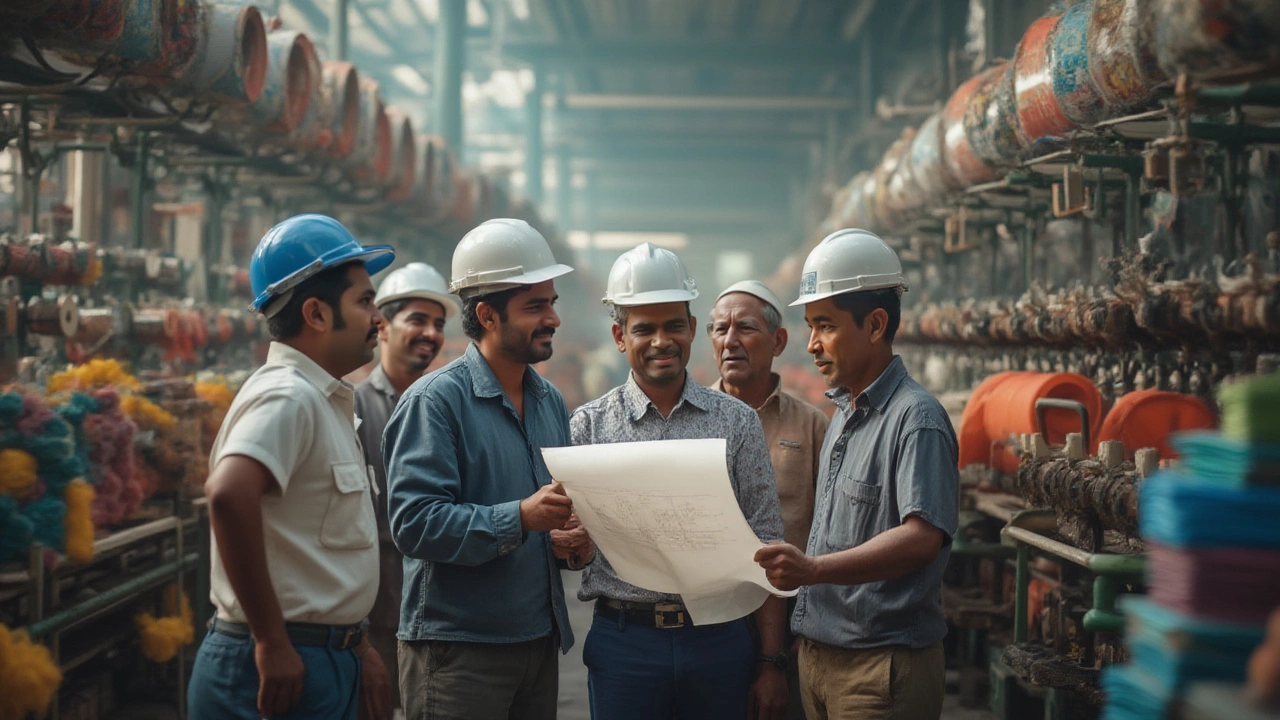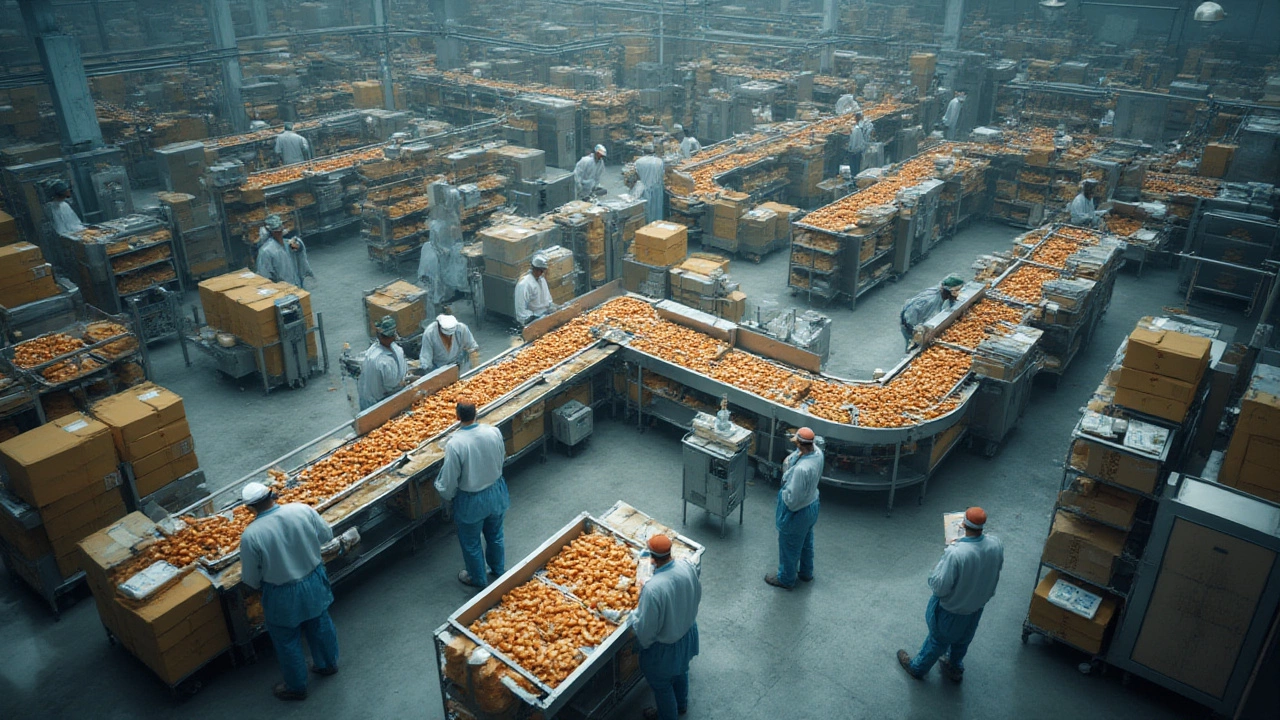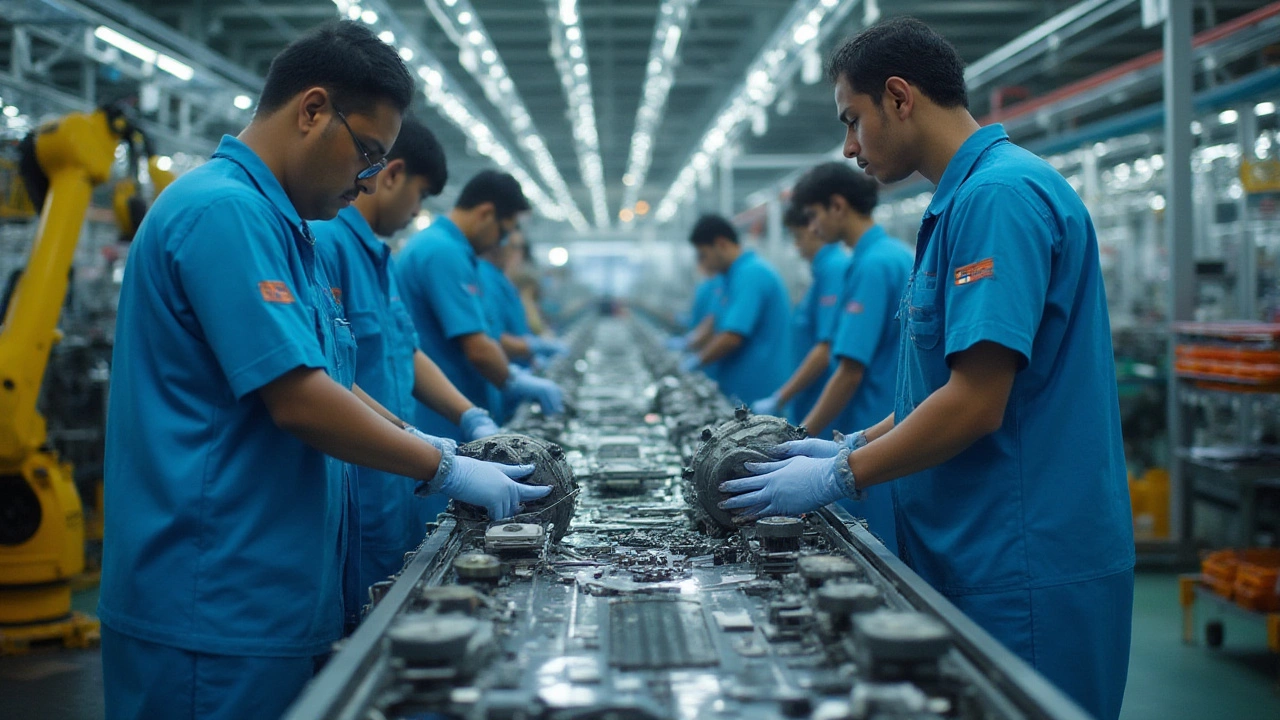Have you ever stopped to look at the world around you and realised just about everything - from your phone and car to your kid’s favourite snacks - is made by the millions, if not billions? That’s no accident. Behind the scenes, there’s a powerhouse of a system making all this possible: mass production. This way of making things isn’t just common, it’s basically the backbone of modern manufacturing, shaping entire economies and even our daily lives.
What is Mass Production? The DNA of Modern Manufacturing
Imagine stepping into a huge factory, humming with energy. Machines whirr, products roll down conveyor belts, workers are positioned at every step, each doing a specific job in perfect rhythm. That’s mass production in action. It’s the process of manufacturing large amounts of standardized products, usually on assembly lines. This approach became famous in the early 20th century thanks to Henry Ford and his Model T Ford production line—suddenly, cars weren’t rare or just for the rich. They were something ordinary families could own.
But mass production isn’t just about cars or gadgets. It’s used for clothes, food, electronics, medicines—you name it. The magic really lies in standardizing the steps. By making every part and process as similar as possible, factories can crank out huge numbers of identical items, fast and cheap. For example, when I picked up a chocolate bar at the shop for my son Ishaan, there’s a good chance it’s almost exactly the same as millions of others made that month, down to the wrapper.
One mind-blowing fact: The International Organization for Standardization (ISO) shows that over 90% of all manufactured goods globally are produced using mass production systems. And it’s not slowing down—new factories opening this year in Asia, Europe, and the USA all centre their designs around these principles.
Here’s what really makes mass production possible:
- Specialized Equipment: Machines are built for one task—making the same part, over and over, with clockwork consistency.
- Division of Labour: Every worker or robot does just one small job, which gets brilliantly efficient after a few hundred tries.
- Assembly Lines: Instead of making a whole product in one go, it’s built step by step as it moves along a path, with each station adding something.
- Interchangeable Parts: All parts are made to fit every product exactly, removing the need for hand-fitting or workarounds.
It might sound repetitive, but this is what keeps costs low and makes technology accessible. There’s an old joke in engineering circles: if Henry Ford came back and saw an iPhone production line, he’d feel right at home.
This approach does come with its own quirks. For example, in mass production, changing a product’s design is a big deal and can cost millions. And sometimes, items are made in such huge numbers that if there’s a flaw, it can affect millions of people—think of massive car recalls or odd-tasting crisps.
But when it works (and it usually does), the efficiency is staggering. According to a 2024 study by Deloitte, companies using effective mass production lines were able to churn out up to 100,000 smartphones a day with only a few hundred employees. The cost savings get passed along to us, making tech and products cheaper than ever before.

Why Mass Production Dominates: Real-World Examples and Advantages
You know that satisfying moment when your dinner arrives at exactly the right time, piping hot, every time you visit your favourite fast-food joint? That’s mass production thinking, scaled down to food. It’s everywhere, from the tiniest screw in your chair to jumbo jets cruising at 40,000 feet. But let’s give a few everyday examples of where mass production isn’t just convenient – it’s essential.
Take the automobile industry. The iconic Ford Model T started this all, but today, cars like the Toyota Corolla and Honda Civic are churned out by the millions each year. It’s the same template for each model, which means you or I can get spare parts from shops in Birmingham or Bangalore, and they’ll fit perfectly. Here’s a quick snapshot of the scale:
| Industry | Annual Output (Global, 2024) |
|---|---|
| Automobiles | >90 million units |
| Smartphones | 1.4 billion units |
| Fast Food Burgers | ~50 billion servings |
| T-Shirts | >3.5 billion units |
This scale is only possible when factories optimize not just their machines, but the entire supply chain. Here’s what makes mass production a winner:
- Low Unit Cost: The more you make, the less each thing costs. This is how tech gadgets dropped in price, even as they got smarter.
- Consistent Quality: Whether it’s medicine or a laptop, you can expect every unit to work (almost) exactly the same.
- Fast Fulfilment: Big orders aren’t scary—a basic trainer shoe can be delivered to thousands of shops in a week.
- Easy Global Scale: Set up your process in one place, then replicate it around the world. That’s how companies from Europe to Vietnam deliver identical products.
Now, it’s not just about cranking out more stuff. Modern mass production often borrows tricks from something called lean manufacturing, which was made famous by Toyota. Lean means constantly squeezing out waste—things like waiting, excess motion, overproduction—so every step adds value. Factories use techniques like Just-In-Time (JIT) production where you only make what’s needed, as close as possible to when it’s needed. That way, there’s less inventory sitting around, and companies save even more money. There’s a reason mass production and lean manufacturing go hand-in-hand now: the winning combo means more gets done with fewer mistakes and less cost.
And today, mass production doesn’t even need as many people. With robots, AI, and industrial automation, one operator can oversee a dozen machines, each cranking out hundreds of parts an hour. My mate Joe works in the automotive sector here in Birmingham and once joked he feels more like a computer programmer than a mechanic some days.
But what’s often overlooked is the impact on jobs and people. While mass production has made goods cheaper, it’s also changed the kind of work that’s available. Skilled trades are still needed, but roles look different—think overseeing machines rather than making everything by hand.
“Mass production is not just scale for the sake of scale. It’s about providing value, quality, and accessibility. That’s what built the consumer economy as we know it.” – Prof. Michael Brown, University of Manchester
Tech has made things even slicker. With real-time monitoring, factories can spot bottlenecks or faults in seconds. RFID tagging, 3D printing for quick prototypes, and computer modelling all help make sure mistakes don’t cascade down the line and wreck thousands of units. The goal is crystal clear: deliver more, and do it better and faster each year.

Challenges, Trends, and the Future of Mass Production
Mass production is amazing, but it’s not always smooth sailing. Sometimes, it feels like the entire world is chasing speed and quantity, but there’s a flip side. What happens if the market suddenly changes, or people want something unique instead of cookie-cutter products? That’s where things get interesting.
Let’s start with the big challenges. Customization is on the rise. More people, especially younger generations, want stuff tailored to their tastes: custom trainers, personalized gadgets, and even made-to-measure T-shirts. Traditional mass production isn’t built for flexibility—it’s for sameness at speed. But savvy manufacturers are blending the best of both worlds using something called mass customization. They set up their machines so you can tweak your order online but still get it in days, not months. Adidas, for example, can let you design your own trainers online, then use their ultra-efficient machines to produce and ship your pair within the week.
Environmental impact is another headache. Mass production, when not carefully managed, can guzzle huge amounts of resources and create waste. Sustainable manufacturing is fast becoming a must, not just a nice-to-have. Companies are investing in cleaner energy, recyclable materials, and smarter logistics to cut their carbon footprint. For example, Unilever has committed to net-zero emissions in its supply chain by 2039, a goal that’s only possible with a total rethink of how their factories operate.
The other big disruptor? Technology. AI, robotics, and smart sensors don’t just automate work—they learn from it and make improvements in real time. Modern plants have digital twins—virtual copies of every machine and process. This lets managers test changes without shutting down the line, saving time and money. Some car factories in the UK use fully automated lines that can swap between models with a few taps on a screen, tackling the age-old problem of inflexibility.
And then there’s the human side. As factories evolve, workers need new skills: coding for robots, troubleshooting software, understanding analytics. It raises big questions about training, education, and what kind of jobs manufacturing will offer in the future. Here in Birmingham, local colleges are working closely with manufacturers to make sure young people are ready for this new working world—hands-on apprenticeships are making a real comeback.
Here are a few trends shaping where things are going:
- More Smart Factories: The number of “Industry 4.0” plants—where everything talks to everything else—jumped by 20% in the UK last year alone.
- On-Demand and Local Manufacturing: Companies are setting up micro-factories close to cities, reducing shipping cost and time.
- Modular Design: Products are designed in blocks, so you can quickly update features or swap parts without redoing the whole system.
- Eco-Friendly Operations: Factories are installing solar panels, using recycled water, and going paperless—both to save money and appeal to eco-conscious buyers.
So, while mass production remains the king of making things in bulk, it’s being forced to reinvent itself, becoming smarter, greener, and a bit more personal. Whether you’re biting into a burger, unboxing the latest phone, or cruising in your family hatchback, you’re seeing the best of what this system’s got to offer. And as technology races ahead, don’t be surprised if the next big thing you buy was made just for you—on a line built for a million others.
